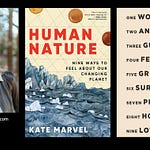Air Date: August 6, 2021
In this special live Sustain What webcast, I ran a solution-focused discussion with top experts on pathways to risk reduction in the world’s hundreds of crowding deluge danger zones.
Humans are profoundly heating the climate and changing storm patterns through a surge in emissions of heat-trapping gases and other pollution. But there’s also been a simultaneous surge of settlement in zones prone to flooding -- producing what some geographers call an “expanding bull’s eye” of exposure to climate-related threats like floods. And of course the poorest and most marginalized populations are always hurt most.
A pioneering study, published in Nature, greatly raised estimates of population growth in flood-affected regions and offers sobering projections of much more flood exposure through 2030 without big changes in policy at every scale. Luckily the work, sifting millions of high-resolution satellite images, has also produced a new open-access tool, the Global Flood Database (http://global-flood-database.cloudtostreet.ai), that offers officials at all levels, the financial world and communities a clearer view of the exposure they’ve created and a chance to shape safer development paths in the critical years ahead.
Read my story about the paper.
GUESTS:
Beth Tellman, Cloud to Street Chief Science Officer and lead author of the Nature paper
Jean-Martin Bauer, Senior Digital Advisor for the UN World Food Programme and former WFP Country Director of Republic of the Congo
Saleemul Huq, Director of the International Centre for Climate Change and Development
Simon Young, senior director for climate and resilience at the global advisory company Willis Towers Watson (he has been building new types of insurance to respond to floods and other extreme events around the world including Africa, the Caribbean, and the Pacific Islands)














Share this post